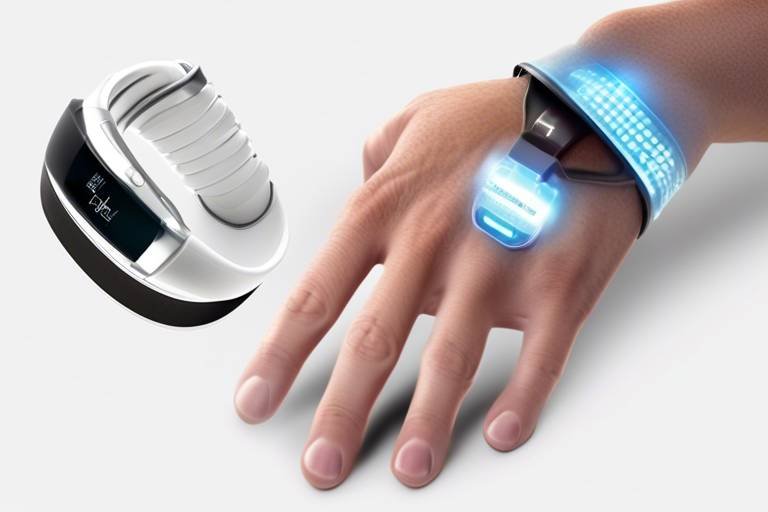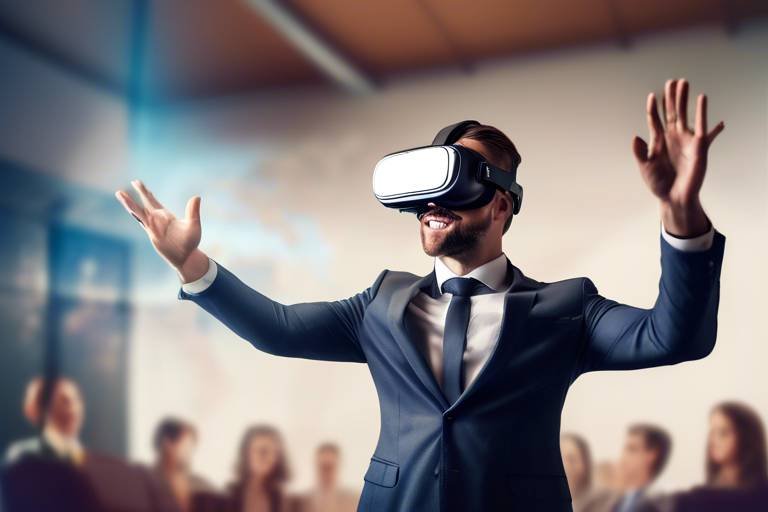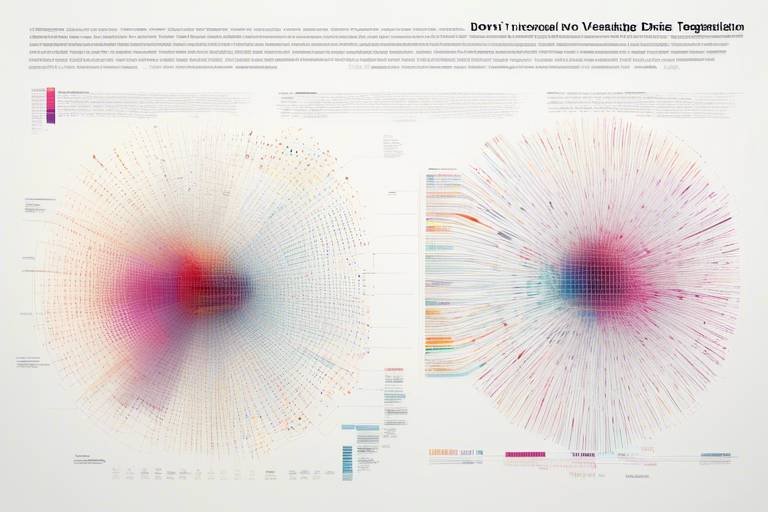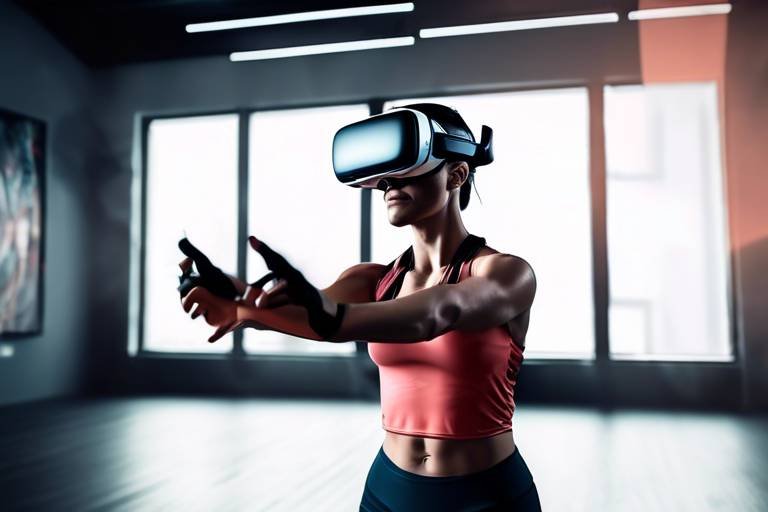Innovations in Wearable Health Devices
In today's fast-paced world, wearable health devices have emerged as game changers in how we monitor and manage our health. These devices, ranging from smartwatches to fitness bands, are not just trendy accessories; they are sophisticated tools that provide real-time insights into our health metrics. Imagine having a personal health assistant right on your wrist, constantly tracking your heart rate, sleep patterns, and even stress levels! The innovations in this field are nothing short of revolutionary, transforming the landscape of personal health monitoring and making wellness management more accessible than ever before.
The rise of these devices can be attributed to several factors, including advancements in sensor technology, improved battery life, and the integration of artificial intelligence. With the ability to collect and analyze vast amounts of data, wearables empower users to take charge of their health like never before. Whether you're an avid fitness enthusiast or someone looking to maintain a healthier lifestyle, these gadgets offer tailored insights that can help you achieve your goals.
Moreover, the global pandemic has accelerated the adoption of wearable health technology. As people became more health-conscious, the demand for devices that offer real-time monitoring surged. This shift has not only enhanced personal health management but has also paved the way for innovative applications in clinical settings. For instance, wearable devices are now being used to monitor patients' vital signs remotely, allowing healthcare providers to intervene before minor issues escalate into serious health concerns.
As we dive deeper into the world of wearable health devices, it becomes clear that the future is bright. Innovations such as advanced sensors that can detect changes in blood chemistry, smart fabrics that monitor physiological responses, and AI-driven analytics that provide personalized health recommendations are on the horizon. These advancements promise to make health monitoring not only more intuitive but also more effective, ensuring that users remain informed and engaged in their health journeys.
In conclusion, wearable health devices are not just a passing trend; they represent a significant shift in how we perceive and manage our health. With ongoing innovations and the integration of cutting-edge technologies, these devices are set to become an integral part of our daily lives, empowering individuals to take control of their health and well-being.
- What are wearable health devices? Wearable health devices are electronic gadgets worn on the body that monitor and track health metrics like heart rate, sleep patterns, and physical activity.
- How do wearable health devices work? They use sensors to collect data, which is then processed and analyzed to provide insights into your health and wellness.
- Are wearable health devices accurate? Most modern devices offer a high degree of accuracy; however, it's essential to choose reputable brands and understand that they should complement, not replace, professional medical advice.
- Can wearable health devices help with chronic disease management? Yes! They provide real-time data to both patients and healthcare providers, enabling better management of chronic conditions.
- What are the privacy concerns regarding wearable health devices? As these devices collect sensitive health data, it's crucial to ensure that robust security measures are in place to protect user information.

Emerging Technologies in Wearables
The world of wearable health devices is evolving at an astonishing pace, thanks to emerging technologies like artificial intelligence (AI) and machine learning. These advancements are not just enhancing the functionality of wearables; they are revolutionizing the way we approach health monitoring and personal wellness. Imagine a device that not only tracks your steps but also understands your unique health patterns and provides tailored insights to improve your well-being. That's the power of AI in wearables!
With the integration of AI, wearable devices can analyze vast amounts of data collected from users. This analysis allows for more accurate health monitoring and personalized insights. For instance, a fitness tracker can now learn from your daily activities, sleep patterns, and even your stress levels to offer suggestions that fit your lifestyle. This level of personalization keeps users engaged and motivated. It's like having a personal health coach right on your wrist!
Moreover, machine learning algorithms can identify trends in your health data over time. This means that if you're on the verge of developing a health issue, your wearable could alert you before it becomes a significant concern. Think of it as a crystal ball for your health—providing foresight into potential problems and empowering you to take action before it's too late.
Another exciting development is the incorporation of advanced sensors in wearable technology. These sensors are becoming increasingly sophisticated, allowing devices to monitor a wider range of health metrics. For example, many modern wearables can now track heart rate variability, blood oxygen levels, and even stress indicators. This comprehensive data collection provides a clearer picture of your overall health, enabling you to make informed decisions.
To illustrate these advancements, consider the following table that highlights some key features of emerging wearable technologies:
| Technology | Functionality | Benefits |
|---|---|---|
| AI & Machine Learning | Data analysis and personalized insights | Improved engagement and health outcomes |
| Advanced Sensors | Monitoring various health metrics | Comprehensive health data |
| Real-Time Feedback | Instant notifications and alerts | Proactive health management |
As these technologies continue to evolve, the potential for wearables is limitless. We are moving towards a future where health monitoring is not just reactive but proactive. Imagine receiving real-time feedback during a workout, allowing you to adjust your intensity for optimal results or getting alerts about your hydration levels throughout the day. This level of interactivity could change the landscape of personal health management forever.
In summary, the integration of AI, machine learning, and advanced sensors into wearable health devices is not just a trend; it's a transformative shift in how we monitor and manage our health. These innovations are paving the way for a more personalized and proactive approach to wellness, making it easier for users to stay engaged and informed about their health journeys.
- What types of health metrics can wearables track? Wearables can track a variety of metrics, including heart rate, steps taken, sleep patterns, blood oxygen levels, and even stress indicators.
- How does AI improve wearable health devices? AI enhances wearables by analyzing user data to provide personalized health insights and alerts, improving user engagement and health outcomes.
- Are there any privacy concerns with wearable health devices? Yes, as wearables collect sensitive health data, it's crucial to ensure robust data privacy and security measures are in place to protect user information.

Impact on Chronic Disease Management
Wearable health devices are truly revolutionizing the way we manage chronic diseases. Imagine having a personal health assistant right on your wrist, constantly monitoring your vital signs and providing real-time feedback. This is not just a futuristic dream; it’s happening now! With the ability to track metrics like heart rate, blood pressure, and glucose levels, these devices empower patients to take control of their health like never before.
One of the most significant advantages of wearable technology is its capacity to provide real-time data to both patients and healthcare providers. This constant stream of information enables timely interventions, which can be crucial for individuals managing conditions such as diabetes or hypertension. For instance, if a diabetic patient’s glucose levels spike, their wearable device can alert them instantly, prompting them to take corrective actions. This immediacy can prevent serious complications and ultimately save lives.
Moreover, the integration of wearables into chronic disease management facilitates a more collaborative approach to healthcare. Patients can share their health data with their healthcare providers seamlessly, allowing for more informed decisions. This connection fosters a stronger relationship between patients and providers, as both parties are equipped with the same information. Can you imagine how much more confident you would feel knowing your doctor has access to your health data in real-time? It’s like having a safety net that ensures you’re never alone in your health journey.
Remote patient monitoring is a game changer in the healthcare landscape. With wearables, healthcare professionals can keep an eye on patients' health metrics from afar, enhancing accessibility to care. This is especially beneficial for individuals living in rural areas or those with mobility issues. The ability to monitor health conditions without the need for frequent in-person visits not only saves time but also reduces healthcare costs. Patients can receive timely interventions without the hassle of traveling to a clinic.
The integration of telehealth services with wearable devices represents a significant leap forward in healthcare delivery. Imagine being able to consult with your doctor without leaving your home, all while your wearable device sends them your health data in real-time. This seamless communication enhances the efficiency of consultations and follow-ups. Patients can discuss their health metrics during virtual visits, making it easier for providers to tailor their recommendations. It’s like having a health coach and a doctor all in one!
However, as we embrace these advancements, it’s essential to address the data privacy concerns that come with them. Wearable devices collect sensitive health data, and unauthorized access to this information can pose serious risks. Therefore, manufacturers must implement robust security measures to protect user information. Patients should also be educated on how to safeguard their data, ensuring that their health journey remains private and secure. After all, your health is personal, and it should stay that way.
In conclusion, wearable health devices are not just gadgets; they are powerful tools that are transforming chronic disease management. By providing real-time data, facilitating remote monitoring, and enhancing communication with healthcare providers, these devices are paving the way for better health outcomes. As technology continues to evolve, the potential for wearables in chronic disease management is boundless, promising a healthier future for all.
- How do wearable devices help in chronic disease management?
Wearable devices provide real-time health data, enabling timely interventions and better communication with healthcare providers. - Can wearables replace traditional healthcare visits?
While wearables enhance monitoring, they do not replace the need for regular healthcare visits but complement them by providing valuable data. - What measures are in place to protect my health data?
Most manufacturers implement advanced security protocols, but it's also important for users to understand how to protect their data.

Remote Patient Monitoring
Remote patient monitoring (RPM) is a game-changer in the healthcare landscape, allowing healthcare providers to keep a close eye on their patients' health metrics without the need for in-person visits. Imagine being able to monitor your heart rate, blood pressure, or glucose levels from the comfort of your own home! This innovative approach not only enhances patient convenience but also significantly improves the accessibility of healthcare services. With the rise of wearable health devices, patients can now transmit real-time data directly to their healthcare providers, enabling timely interventions and personalized care plans.
One of the most exciting aspects of RPM is its ability to provide continuous health monitoring, which can lead to early detection of potential health issues. For instance, a patient with hypertension can have their blood pressure monitored throughout the day, allowing doctors to adjust medications as needed without waiting for the next scheduled appointment. This proactive approach is crucial for managing chronic conditions, as it helps to prevent complications and hospitalizations.
Additionally, RPM can significantly reduce the burden on healthcare systems. With fewer in-person visits required, healthcare providers can allocate their time and resources more effectively, focusing on patients who need immediate attention. This not only enhances the quality of care but also streamlines operations within healthcare facilities. Moreover, patients who might otherwise struggle to access healthcare—due to distance, mobility issues, or other barriers—can receive the attention they need, ultimately leading to better health outcomes.
However, the success of remote patient monitoring hinges on the effective use of technology. Wearable devices equipped with advanced sensors can track a variety of health metrics, and the data collected must be accurately analyzed and interpreted. This is where the integration of artificial intelligence and machine learning comes into play, as these technologies can help identify trends and anomalies in patient data, offering deeper insights into individual health conditions.
Despite the numerous benefits, there are also challenges associated with RPM. Data privacy and security are paramount concerns, as sensitive health information is transmitted over the internet. Patients must feel confident that their data is protected from unauthorized access. Therefore, healthcare providers must implement robust security measures and ensure compliance with regulations such as HIPAA to safeguard patient information.
In conclusion, remote patient monitoring is not just a trend; it is a significant advancement in healthcare that brings numerous benefits to both patients and providers. By leveraging technology, RPM enhances the quality, accessibility, and efficiency of healthcare services, paving the way for a healthier future. As we continue to embrace these innovations, the potential for improved health outcomes becomes even more promising.
- What is remote patient monitoring? Remote patient monitoring involves using technology to monitor patients' health metrics from a distance, allowing healthcare providers to track their patients' conditions without requiring in-person visits.
- How does remote patient monitoring work? Patients use wearable devices to collect health data, which is then transmitted to healthcare providers in real-time for analysis and timely interventions.
- What are the benefits of remote patient monitoring? Benefits include improved accessibility to healthcare, early detection of health issues, reduced need for in-person visits, and enhanced patient engagement in their healthcare.
- Are there any risks associated with remote patient monitoring? Yes, concerns regarding data privacy and security are significant, as sensitive health information is transmitted electronically. It is crucial for healthcare providers to implement strong security measures to protect patient data.

Telehealth Integration
Imagine a world where your healthcare provider is just a tap away, where your health data flows seamlessly from your wearable device to your doctor’s office without you lifting a finger. This is not just a dream; it’s the reality brought about by the integration of telehealth services with wearable health devices. This integration has become a game-changer in how we approach healthcare, making it more accessible, efficient, and personalized.
With the rise of telehealth, patients can now enjoy the convenience of virtual consultations, which are enhanced by real-time data collected from their wearables. For instance, if you’re wearing a smart watch that monitors your heart rate, your doctor can access this information during a video call. This means that instead of guessing your health status, they can make informed decisions based on actual data. Isn’t that a breath of fresh air?
The benefits of telehealth integration with wearables are numerous:
- Enhanced Communication: Patients can share their health metrics instantly, leading to more productive discussions during consultations.
- Timely Interventions: Healthcare providers can quickly identify any alarming trends in a patient’s health data, allowing for prompt action.
- Convenience: Patients no longer need to travel for routine check-ups; they can consult their doctors from the comfort of their homes.
Moreover, this integration promotes a more proactive approach to health management. Instead of waiting for symptoms to appear, patients can monitor their health continuously, allowing for early detection of potential issues. This is especially crucial for individuals with chronic conditions, where every piece of data can lead to life-saving interventions.
However, it's essential to recognize that with great power comes great responsibility. As telehealth and wearables become more intertwined, there are considerations regarding data privacy and security. Patients must ensure that their sensitive health information is protected from unauthorized access. Healthcare providers, on the other hand, need to implement robust security measures to safeguard this data.
In summary, the integration of telehealth with wearable health devices is a revolutionary step towards a more connected healthcare ecosystem. It not only enhances communication and accessibility but also empowers patients to take an active role in managing their health. As we continue to embrace this trend, the future of healthcare looks brighter than ever.
- What are wearable health devices? Wearable health devices are gadgets like smartwatches or fitness trackers that monitor health metrics such as heart rate, activity levels, and sleep patterns.
- How does telehealth work with wearables? Telehealth allows healthcare providers to access real-time data from wearables, enabling remote consultations and timely interventions.
- Are there privacy concerns with wearable health devices? Yes, as these devices collect sensitive health data, it’s crucial to ensure that proper security measures are in place to protect this information.
- Can wearables help manage chronic diseases? Absolutely! Wearable devices provide continuous monitoring, which is vital for managing conditions like diabetes and hypertension.

Data Privacy Concerns
As the adoption of wearable health devices skyrockets, have emerged as a significant issue. With these devices continuously collecting sensitive information about our health, the question arises: how safe is our data? Wearable technology is designed to monitor everything from heart rates to sleep patterns, but this wealth of information can be a double-edged sword. While it offers invaluable insights into our health, it also poses risks if not managed properly.
Many users are unaware of how their data is collected, stored, and shared. For instance, companies often gather user data for research and development, but without proper transparency, users may feel uneasy about where their information is going. It's crucial for consumers to understand the implications of sharing their health data. In fact, a recent survey revealed that 62% of users are concerned about their health data being misused. This highlights the need for companies to prioritize data security and user privacy.
To address these concerns, manufacturers of wearable devices must implement robust security measures. Here are some essential practices that should be in place:
- Encryption: Data should be encrypted both in transit and at rest to prevent unauthorized access.
- User Consent: Companies should obtain explicit consent from users before collecting or sharing their data.
- Transparency: Clear communication about data usage policies is vital for building trust.
- Regular Audits: Conducting regular security audits can help identify vulnerabilities and improve data protection.
Moreover, regulatory frameworks like GDPR (General Data Protection Regulation) and HIPAA (Health Insurance Portability and Accountability Act) are crucial in safeguarding user data. These regulations set strict guidelines on how personal health information should be handled, ensuring that companies take the necessary steps to protect user privacy. However, compliance can vary significantly between companies, making it essential for users to do their homework before choosing a wearable device.
Ultimately, the responsibility lies not only with the manufacturers but also with users to stay informed and vigilant. As we embrace these innovative technologies, we must also advocate for our rights to privacy and security. The more educated we are about our data, the better equipped we will be to make informed decisions about our health and the devices we choose to use.
- What types of data do wearable devices collect? Wearable devices typically collect data such as heart rate, steps taken, sleep patterns, and sometimes even blood pressure and oxygen levels.
- How can I protect my data when using wearable devices? Ensure that the device you choose has strong security features, read privacy policies, and regularly update your device's software.
- Are there regulations that protect my health data? Yes, regulations like GDPR and HIPAA are designed to protect personal health information and ensure companies handle your data responsibly.
- What should I do if I suspect my data has been compromised? Contact the manufacturer immediately, change your passwords, and monitor your accounts for any unusual activity.

Fitness and Activity Tracking
In today's fast-paced world, staying active and maintaining a healthy lifestyle can feel like a daunting task. However, wearable health devices have emerged as game-changers, revolutionizing the way we approach fitness and activity tracking. These innovative gadgets not only monitor our physical activity but also provide us with valuable insights that can motivate and guide us on our fitness journeys. Imagine having a personal trainer on your wrist, constantly encouraging you to move, track your progress, and celebrate your achievements!
Wearable devices come equipped with a variety of features designed to help users understand their activity levels better. For instance, many devices can track steps taken, calories burned, and even the quality of sleep. This data is not merely numbers; it serves as a powerful motivator. When you see how many steps you’ve taken or how many calories you’ve burned, it can ignite a fire within you to push even harder. It’s like having a competition with yourself, and who doesn’t love a little friendly rivalry?
Moreover, these devices often include features such as heart rate monitoring and GPS tracking. Heart rate monitors are particularly beneficial because they allow users to gauge their exertion levels during workouts. By keeping an eye on your heart rate, you can ensure that you are working out in the optimal zone for fat burning or cardiovascular improvement. Meanwhile, GPS tracking can help you map your runs or bike rides, providing insights into your pace and distance. This not only helps in setting personal records but also in planning future workouts.
To illustrate the impact of fitness tracking, let’s take a look at some popular features found in wearable health devices:
| Feature | Benefit |
|---|---|
| Step Counter | Encourages daily movement and helps set achievable goals. |
| Heart Rate Monitor | Helps optimize workouts and track cardiovascular health. |
| Sleep Tracker | Provides insights into sleep quality, promoting better rest. |
| Calorie Tracker | Helps manage diet and understand energy expenditure. |
| GPS Tracking | Allows for route mapping and pace analysis during outdoor activities. |
Additionally, many of these devices come with mobile applications that sync seamlessly with the wearables. These apps allow users to set fitness goals, track their progress over time, and even connect with friends for added motivation. Imagine the thrill of sharing your achievements with friends or participating in challenges! This social aspect of fitness tracking can make exercising feel less like a chore and more like a community event.
However, it’s essential to remember that while wearable health devices are powerful tools, they are most effective when combined with a proactive mindset. They can provide the data and insights, but it’s up to the user to take action based on that information. So, whether you’re looking to lose weight, build muscle, or simply stay active, these devices can be your best ally in achieving your fitness goals!
- What types of fitness activities can wearables track? Most wearables can track a variety of activities including walking, running, cycling, swimming, and even specific workouts like yoga or strength training.
- Do I need to wear my device all the time? While it’s beneficial to wear your device during workouts, many users also wear them throughout the day to monitor overall activity levels.
- Can wearables help me lose weight? Yes! By tracking your activity levels and calorie expenditure, wearables can provide you with the insights needed to create a calorie deficit for weight loss.
- Are there any privacy concerns with fitness trackers? Yes, it’s important to review the privacy policies of the wearable devices and apps you use to ensure your data is protected.

Future Trends in Wearable Health Tech
The future of wearable health technology is brimming with exciting possibilities that promise to revolutionize how we monitor and manage our health. As technology continues to advance, we can expect to see cutting-edge innovations that make health monitoring not only more intuitive but also more effective. Think of wearables as your personal health assistant, constantly learning and adapting to your needs. With advancements in sensor technology, we will soon have devices that can track a wider array of health metrics with unparalleled accuracy.
Imagine a world where your wearable device can not only monitor your heart rate but also assess your hydration levels, stress responses, and even detect early signs of illness. The integration of advanced sensors will enable these devices to provide real-time feedback, allowing users to make informed decisions about their health on the fly. For instance, if your device detects an irregular heart rhythm, it could alert you to seek medical attention before the situation escalates. This proactive approach could save lives and reduce the burden on healthcare systems.
Another exciting trend is the improvement in battery life. Currently, many wearable devices require frequent charging, which can be a hassle for users. However, future innovations may lead to wearables that can last for weeks or even months on a single charge. This will enhance user experience significantly, allowing individuals to wear their devices continuously without interruption, ensuring that they never miss a beat—literally.
Moreover, the user interface of wearable devices is set to become more user-friendly and engaging. Imagine a seamless interaction where your device communicates with you in a natural language, providing insights and recommendations based on your health data. This shift towards a more conversational interface will make it easier for users of all ages to engage with their health metrics, fostering a culture of wellness.
As we look forward, the integration of wearables with smart home devices is another trend that promises to enhance health management. Picture this: your wearable device communicates with your smart thermostat to adjust the temperature based on your activity level, or it syncs with your kitchen appliances to suggest meals that align with your dietary goals. This interconnected ecosystem will create a holistic approach to health management, making it easier for users to maintain a healthy lifestyle.
Finally, one of the most promising aspects of future wearable health tech is the potential for personalized health insights. With advancements in analytics and machine learning, wearables will be able to tailor recommendations based on individual health data and lifestyle choices. This means that instead of generic advice, users will receive customized insights that are specifically relevant to their health journey. For example, if your wearable detects that you’re not getting enough sleep, it might suggest relaxation techniques or adjustments to your evening routine to help improve your sleep quality.
In summary, the future of wearable health technology is not just about tracking data; it’s about creating a comprehensive, interconnected health management system that empowers users to take control of their well-being. With innovations in sensor technology, battery life, user interfaces, and personalized insights, wearables are set to become indispensable tools in our quest for better health.
- What types of health metrics can wearables track? Wearables can track a variety of health metrics including heart rate, sleep patterns, activity levels, hydration, and even blood oxygen levels.
- How do wearables improve chronic disease management? Wearables provide real-time data that allows both patients and healthcare providers to monitor health conditions closely, facilitating timely interventions.
- Are wearables secure? While wearables collect sensitive health data, manufacturers are increasingly implementing robust security measures to protect user information.
- Will future wearables require frequent charging? Future advancements in battery technology are expected to significantly extend the battery life of wearable devices, minimizing the need for frequent charging.

Integration with Smart Home Devices
The integration of wearable health devices with smart home technology is a game-changer in the realm of personal health management. Imagine waking up in the morning, and your wearable device syncs seamlessly with your smart home system. As you step out of bed, your smart thermostat adjusts to your preferred temperature, and the smart lights gently brighten to mimic the sunrise. This isn’t just about convenience; it’s about creating an environment that supports your health goals.
These connected systems allow for a more holistic approach to wellness. For instance, a wearable device can monitor your heart rate and send that data to your smart home hub. If your heart rate spikes during a workout, the hub could automatically adjust the air conditioning to keep you cool, or even suggest a hydration reminder through your smart speaker. This level of integration ensures that your home is not just a place to live but a supportive environment for your health.
Furthermore, consider the impact of this technology on sleep quality. Wearables that track your sleep patterns can communicate with smart home devices to create the ideal sleeping conditions. For example, if your wearable detects that you are in a deep sleep phase, your smart blinds could close to block out any light, or your white noise machine could be activated to minimize disturbances. This synergy between wearables and smart home devices can lead to improved sleep hygiene, ultimately enhancing overall health.
However, it's essential to note that this integration also raises questions about data privacy and security. With multiple devices collecting and sharing sensitive health information, users must be vigilant about the platforms they choose. Ensuring that both your wearable and smart home devices have robust security measures in place is crucial to protect your personal data. As technology advances, manufacturers are increasingly focusing on enhancing security features, but it remains a shared responsibility between users and providers.
In summary, the integration of wearable health devices with smart home technology is paving the way for a future where health management is more proactive and personalized. By creating a connected ecosystem, users can benefit from real-time data that informs their daily routines, leading to better health outcomes and a more engaged lifestyle. As we continue to embrace these innovations, the possibilities for enhancing personal wellness are truly exciting.
- How do wearable devices communicate with smart home systems?
Wearable devices typically use Bluetooth or Wi-Fi to connect with smart home hubs, allowing for real-time data sharing and interaction. - Can I customize my smart home settings based on wearable data?
Yes! Many smart home systems allow for customizable settings that can be adjusted based on the data collected from your wearable device. - What are the privacy concerns with integrating wearables and smart home devices?
Privacy concerns mainly involve the security of personal health data. It's important to use devices from reputable manufacturers that prioritize data protection. - Will integrating wearables with smart home devices improve my health?
While it can enhance your health management by providing real-time insights and tailored recommendations, individual results may vary based on personal habits and lifestyle choices.

Personalized Health Insights
In today's fast-paced world, the quest for better health is more personalized than ever before. Thanks to advancements in wearable health technology, individuals can now receive tailored health insights that cater to their unique needs. Imagine having a personal health coach available 24/7, providing you with real-time feedback based on your body’s signals. This is not just a dream; it’s the reality that wearable devices are creating.
Wearable devices equipped with sophisticated analytics can track a plethora of health metrics, such as heart rate, sleep patterns, and physical activity levels. By analyzing this data, these devices can generate insights that help users understand their health better. For example, if a user has been sleeping poorly, their wearable might suggest adjustments to their bedtime routine or recommend relaxation techniques to improve sleep quality. This kind of personalized feedback empowers users to take charge of their health in a way that was previously unimaginable.
Moreover, the integration of artificial intelligence (AI) in wearables is a game-changer. AI algorithms can learn from individual behaviors and health patterns, leading to increasingly accurate predictions and recommendations. For instance, if a user consistently experiences elevated stress levels during the week, the device might suggest mindfulness exercises or breathing techniques tailored to their specific situation. This level of personalization not only enhances user engagement but also fosters a deeper connection between the individual and their health journey.
To illustrate the impact of personalized health insights, consider the following table, which showcases how different metrics can lead to actionable health recommendations:
| Health Metric | Potential Insight | Actionable Recommendation |
|---|---|---|
| Heart Rate Variability | Indicates stress levels | Practice mindfulness or meditation |
| Sleep Duration | Reflects overall recovery | Adjust bedtime or reduce screen time |
| Daily Steps | Shows activity levels | Set daily step goals or join a fitness challenge |
| Caloric Intake | Affects weight management | Consult a nutritionist for meal planning |
As we look towards the future, the potential for even more advanced personalized health insights is immense. With ongoing developments in machine learning and data analytics, wearables will soon be able to offer even more precise recommendations. Imagine a device that not only tracks your health but also predicts potential health issues before they arise! This proactive approach to health management is not just a possibility; it’s on the horizon.
However, as we embrace these innovations, it’s crucial to consider the implications of data privacy. With wearables collecting sensitive information, users must be aware of how their data is being used and protected. Trust in the technology is essential for widespread adoption, and companies must prioritize robust security measures to safeguard user information.
In conclusion, personalized health insights from wearable devices are revolutionizing the way we approach our health. By leveraging technology to provide tailored recommendations, these devices empower us to make informed decisions and take proactive steps toward better health. As we continue to innovate, the future of personalized health management looks brighter than ever!
- What types of data do wearable health devices track?
Wearable health devices can track a variety of metrics, including heart rate, sleep patterns, physical activity, and even stress levels. - How do personalized health insights improve my health?
By receiving tailored recommendations based on your unique data, you can make informed decisions that lead to healthier lifestyle choices. - Are my health data safe with wearable devices?
While most reputable companies implement strong security measures, it’s essential to understand their privacy policies and how your data will be used. - Can wearables help with chronic disease management?
Yes, wearables can provide valuable real-time data that helps both patients and healthcare providers manage chronic conditions more effectively.
Frequently Asked Questions
-
What are wearable health devices?
Wearable health devices are technology tools that you can wear on your body, like smartwatches or fitness trackers. They monitor various health metrics such as heart rate, steps taken, sleep quality, and even stress levels. Think of them as your personal health assistants, always ready to give you insights about your well-being!
-
How do wearable health devices improve chronic disease management?
These devices provide real-time data that both patients and healthcare providers can use. For instance, if you have diabetes, your wearable can track your blood sugar levels and send alerts if they go out of range. This allows for timely interventions, making it easier to manage chronic conditions effectively.
-
Can wearables be integrated with telehealth services?
Absolutely! Many wearable health devices now integrate seamlessly with telehealth platforms. This means you can share your health data with your doctor during virtual consultations, leading to more informed discussions and better health outcomes.
-
What are the privacy concerns associated with wearable health devices?
As these devices collect sensitive health information, data privacy is a significant concern. It's essential to choose devices from reputable manufacturers that prioritize user security and offer robust measures to protect your data from unauthorized access.
-
How can wearables help with fitness tracking?
Wearable fitness trackers monitor your physical activity, providing insights into your daily routines. They can help you set and achieve personal fitness goals, whether it's running a certain distance or completing a specific number of workouts each week. Think of them as your workout buddy, cheering you on!
-
What future trends can we expect in wearable health technology?
The future looks bright! We can expect advancements like improved battery life, advanced sensors for more accurate measurements, and enhanced user interfaces that make health monitoring even more intuitive. Plus, the integration with smart home devices is set to create a connected ecosystem for better health management.
-
Will wearables provide personalized health insights?
Yes! With advancements in analytics, wearables are becoming smarter at providing personalized insights. They can tailor health recommendations based on your unique data and lifestyle choices, helping you make informed decisions about your health.



















